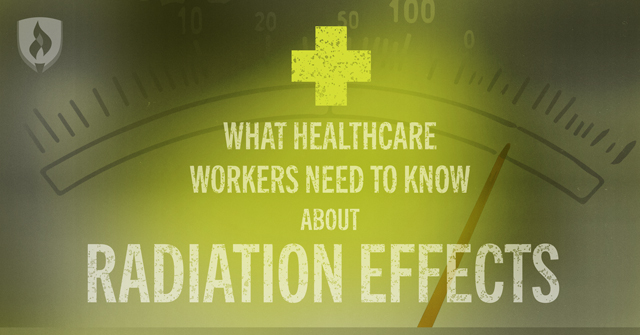
We’ve all heard of radiation, but most people don’t really understand what it is. How is radiation used in the healthcare industry, and what effects does it have on healthcare workers?
We’ve gathered all the facts you’ll need to make a well-informed decision about your healthcare career.
What is radiation?
People are exposed to radiation far more than they realize. Routine activities like flying in an airplane or even eating a banana expose you to low levels of radiation. Simply walking around on Earth means you’re surrounded by a constant “background” of radiation from natural materials in the environment!
Radiation is simply a form of energy, like light, heat and sound, according to the Health Physics Society.
But the type of radiation used in healthcare is a bit more complex than that. The radiation used in radiology procedures is an emission given off by unstable (or radioactive) atoms that are trying to reach stability. This ionizing radiation is what can eventually cause harmful side effects with enough exposure.
How does radiation work in healthcare?
Radiation is commonly used to produce diagnostic images in healthcare. This includes X-rays, CT scans and mammograms. Not all radiation imaging procedures involve harmful ionizing radiation, though — MRIs and ultrasounds make use of magnetic fields and sound waves instead.
You’ll be relieved to hear that most healthcare workers aren’t exposed to enough radiation to be concerned for their health. But those working in radiology are regularly exposed to low doses of radiation when they obtain patient imagery.
Other healthcare workers who see consistent radiation exposure are dental hygienists, who regularly capture dental X-rays, and interventional radiologists, who are specialized physicians who use radiation inside a patient’s body to provide treatment.
How much radiation is safe?
There’s debate about just how much radiation exposure is safe. Technically any amount of radiation can be harmful. But at very low exposures, the estimated increases in risk are very small, according to the Environmental Protection Agency.
Experts have trouble agreeing how much chronic radiation (that is, low-dose exposure over time) is safe, because the effects of radiation don’t typically make an appearance until years later, and those effects may have actually been caused by other factors. Once they do appear, those radiation effects can include cancer, cataracts, thyroid disease and cardiovascular changes.
Current Occupational Safety and Health Administration (OSHA) standards allow for the following amounts of exposure in a three-month period:
- Whole body – 1 ¼ rem
- Hands, forearms, feet and ankles – 18 ¾ rem
- Skin of whole body – 7 ½ rem
Some providers choose to go beyond OSHA recommendations and follow ALARA instead: as Low as Reasonably Achievable. ALARA assumes that no dose of radiation is safe, so every possible precaution is taken to prevent radiation exposure in healthcare workers.
The bottom line? Even though it is assumed that no radiation exposure is completely risk free, there’s no denying that you’ll lower your chances of radiation effects by taking the necessary precautions.
How are healthcare workers protected from radiation?
Healthcare providers are extremely invested in the safety of their employees and patients when it comes to radiation. We know, according to OSHA, that the degree of exposure depends on a number of factors, such as the amount of radiation, the duration of exposure, the distance from the source and the type of shielding in place.
That’s why these protection measures are recommended to limit healthcare workers’ radiation exposure:
Lead aprons and gloves
Lead-plated glass that acts a barrier wall
Lead strips during fluoroscopy procedures
Maximized distance from the radiation source
Remote procedures that can be performed from a radiation-free room
Despite these protections, some amount of radiation exposure will inevitably get through. Healthcare facilities keep a close watch on their employees’ radiation levels with special badges called dosimeters.